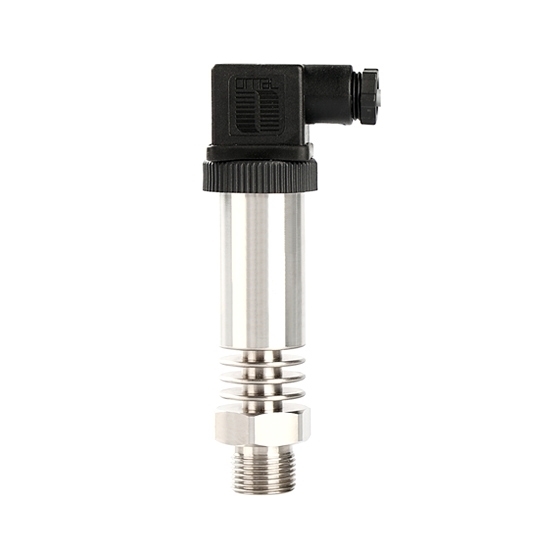How to Choose a Pressure Sensor?
For most engineering applications, choosing a suitable pressure sensor (pressure transducer) will have an important impact on the accuracy of the entire engineering measurement and the progress of the project. There are many types of pressure sensors available today. How to select a pressure sensor reasonably according to the specific measurement purpose, measurement object and measurement environment is the first problem to be solved when measuring a certain quantity.
According to the measurement principle, pressure sensors can be divided into liquid column type, elastic type, resistive pressure sensor, capacitive pressure sensor, inductive type and vibration frequency type and so on. The pressure sensor can be divided into laboratory type and industrial application type from the structure, so it is more important to select the product well according to the measured pressure object.
Selection principle of pressure sensor
Identify the medium measured by the pressure sensor
In the measurement environment of food and pharmaceutical grades, it is necessary to pay attention to the hygienic problems of the measurement process and whether the measurement medium is intentionally corrosive. The flat film pressure sensor is the most suitable for this working condition. The diaphragm and housing of this pressure sensor are made of 316L stainless steel. The flat film type structure is also easy to clean. Such as mud, crude oil, wet soil, etc. with particles, large impact, the requirements for the pressure sensor's impact resistance, vibration resistance, strong sand impact resistance, and wear resistance are more stringent. Shock-resistant pressure sensors are the first choice for this condition.
The maximum pressure value to be predicted to be measured
In general, you need to choose a pressure transducer with a range that is about 1.5 times larger than the maximum value. This is mainly because in many measurement conditions, such as the scene environment is particularly complex and the interference is strong. There are peaks and continuous irregular fluctuations. Such instantaneous peaks can destroy the pressure sensor. Continuously high pressure values or slightly exceeding the calibrated maximum value of the transmitter will shorten the life of the sensor, and even cause damage and burnout of the sensor. Accurate pre-judgment of pressure range is very necessary.
Accuracy required for the pressure sensor
Accuracy is an important performance index of pressure sensors, and the accuracy of pressure sensors is an important link related to the accuracy of the entire measurement system. The higher the accuracy of the pressure sensor, the more expensive the price. Therefore, the accuracy of the pressure sensor only needs to meet the accuracy requirements of the entire measurement system, and it is not necessary to select it too high. This makes it possible to choose a cheaper and simpler sensor among many sensors for the same measurement purpose.
Tips for selecting a pressure sensor
- Local pressure indication: When the pressure is 2.6Kpa, diaphragm pressure sensor, bellows pressure sensor and Bourdon tube pressure sensor can be used. For example, when detecting low pressure close to atmospheric pressure, a diaphragm pressure sensor or a bellows pressure sensor can be used.
- Remote pressure display: If remote pressure display is required, a pneumatic or electric pressure transformer is generally used, and an electrical pressure transducer can also be used. When the pressure range is 140~280MPa, a high pressure pressure sensor should be used. Thermoelectric vacuum gauges can be used when measuring high vacuum.
- Multi-point pressure measurement: For multi-point pressure measurement, a roving pressure detector can be used. If the measured pressure reaches the limit value and needs to be alarmed, various pressure switches with alarm devices should be selected.
- Selection of range: Determine the range of the instrument according to the size of the measured pressure. For elastic pressure gauges, when measuring stable pressure, the maximum pressure value should not exceed 3/ 4 of the full scale; when measuring fluctuating pressure, the maximum pressure value should not exceed 2/ 3 of the full scale. The minimum measured pressure value should not be lower than 1/3 of the full scale.
- Accuracy selection: According to the maximum measurement error allowed by production, the accuracy level of the instrument is determined in an economical and affordable way. 1.5 or 2.5 is sufficient for general industrial pressure gauges, and 0.5 or 0.35 precision pressure gauges or standard pressure gauges are used for scientific research or precision measurement.
- Consideration of the use environment and medium performance: harsh environmental conditions, such as high temperature, corrosion, humidity, vibration, etc., the performance of the measured medium, such as temperature, corrosiveness, easy crystallization, flammable, explosive, etc., Use this to determine the type and model of the pressure gauge.
- Selection of threaded interface: The threaded interface is generally customized according to the requirements of on-site use, and the size of the interface thread should be explained to the manufacturer when ordering.

